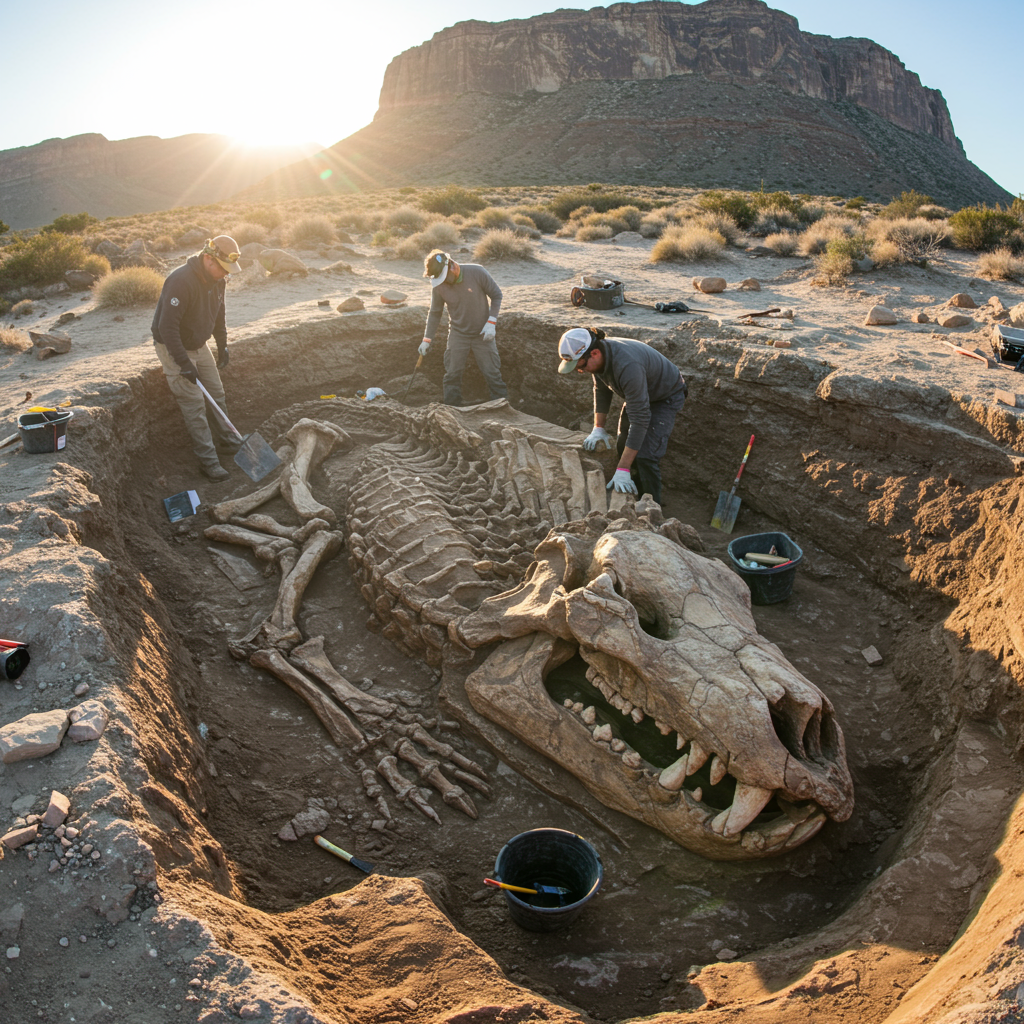They say everything’s bigger in Texas, and now it seems that even ancient, possum-like mammals from 60 million years ago followed that rule. Paleontologists have unearthed the fossilized remains of a newly identified species, dubbed Swaindelphys solastella, in Texas’ Big Bend National Park, revealing it was the largest of its kind from that prehistoric era found in North America.
This significant discovery sheds new light on the diverse ecosystems that thrived in Texas shortly after the age of dinosaurs came to an end.
Unearthing a Prehistoric Giant (of Sorts)
The find was made by a team from the University of Kansas, led by doctoral student Kristen Miller. Their research focused on fossil specimens collected decades ago from Big Bend National Park by paleontologist Judith Schiebout. Among these unstudied fossils were molar teeth that piqued Miller’s interest, leading her to investigate what kind of ancient mammal they belonged to.
Through meticulous morphological comparisons with other prehistoric marsupial relatives, Miller and her team determined the fossils represented a previously unknown species within the Swaindelphys group, which lived during the Paleocene epoch, roughly 60 million years ago. Published in the Journal of Vertebrate Paleontology, their findings introduce Swaindelphys solastella to the scientific world.
While described as “gigantic by the standards of Swaindelphys” and the largest metatherian (the group including marsupials and their extinct kin) found in North America from this specific timeframe, its actual size was more comparable to a modern-day hedgehog. Still, this makes it a notable ‘giant’ among its contemporaries. As senior curator Chris Beard, a co-author on the study, quipped, the size might seem fitting for a Texas find.
Beyond its relative size, Swaindelphys solastella holds further distinction: it is the youngest and the most southern occurrence of the Swaindelphys group known from the Paleocene.
Texas: A Tropical Paradise 60 Million Years Ago
The landscape of Texas 60 million years ago was dramatically different from the arid desert of Big Bend National Park today. The Paleocene epoch was significantly warmer, featuring a more tropical climate with abundant vegetation, extensive rivers, and streams.
The fossils of Swaindelphys solastella were found in what are known as fluvial deposits – sediments left behind by these ancient river systems. This environment provides crucial clues about the conditions in which this ancient mammal lived and died.
Connecting Ancient Possums to Early Primates
The study of Swaindelphys solastella offers insights that extend beyond the evolution of marsupials. Species like Swaindelphys share intriguing similarities with early primates that were also beginning to evolve in North America around the same time. Paleontologists consider these ancient marsupials potential ecological analogues to early primates.
Therefore, understanding the behavior, environmental preferences, and geographical distribution patterns of Swaindelphys can indirectly illuminate the history and evolution of early primates. The research, supported by The Leakey Foundation (an organization focused on human evolution), highlights this crucial connection.
Exploring Ancient Geographic Barriers
The discovery also fuels a fascinating hypothesis about how ancient landscapes influenced the spread of species. Researchers are particularly interested in comparing the fossil record from southern areas like Texas with that from more northern regions, such as Wyoming and Alberta, Canada.
Fossil sites in areas like the Bighorn Basin in Wyoming offer a relatively complete and well-ordered sequence of fossil finds across millions of years, allowing scientists to use specific fossils to identify precise time periods (a technique called biostratigraphy). However, in areas south of a certain point, like Texas, the fossil record from this era appears less predictable, sometimes containing species not expected for a given time period.
Miller and her colleagues hypothesize that an ancient geographical feature – possibly a high point or a divide in the landscape located in southern Wyoming – along with shifting river drainage systems, may have acted as a barrier. They propose that this divide could have restricted the movement and distribution of some species, including Swaindelphys and potentially early primates, creating distinct faunal zones north and south of this feature.
This ongoing research, which Miller plans to explore further in her dissertation, aims to quantitatively determine if there was a significant difference in ancient species distribution across this potential barrier.
The discovery of Swaindelphys solastella in Big Bend National Park underscores the importance of studying these older, often overlooked fossil collections and continuing fieldwork in areas like west Texas. Each find helps piece together the complex puzzle of how life, including our own ancient relatives, evolved and spread across North America in the crucial millions of years following the dinosaur extinction.




